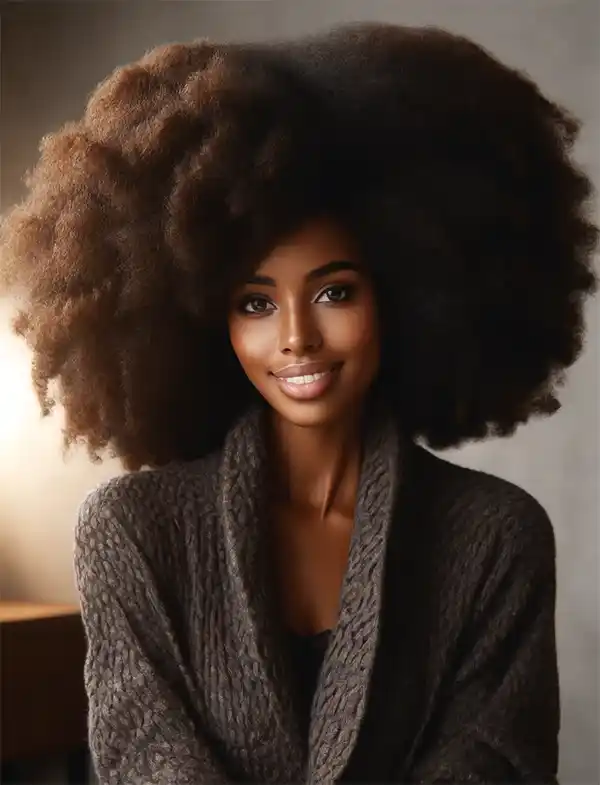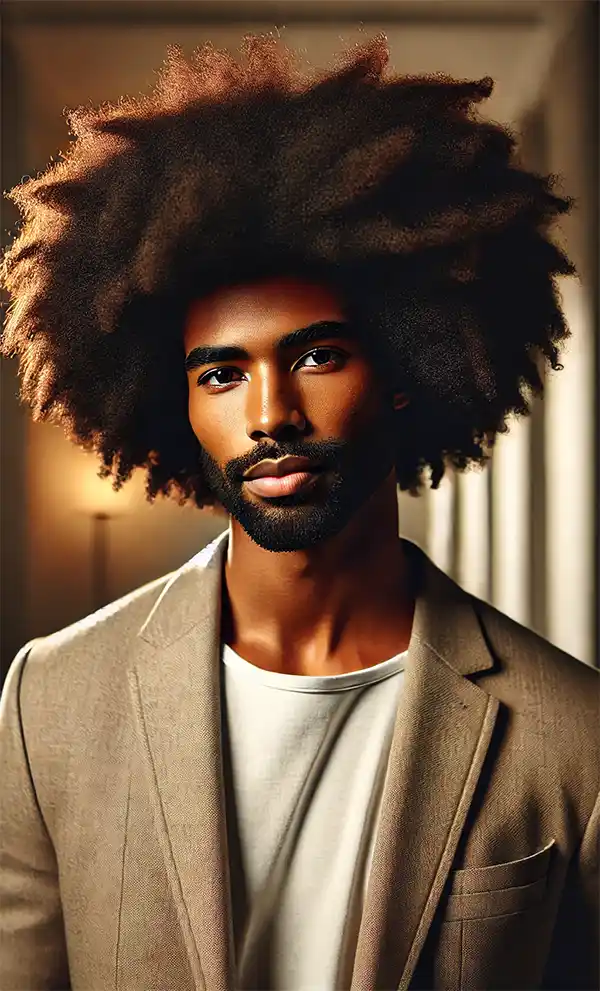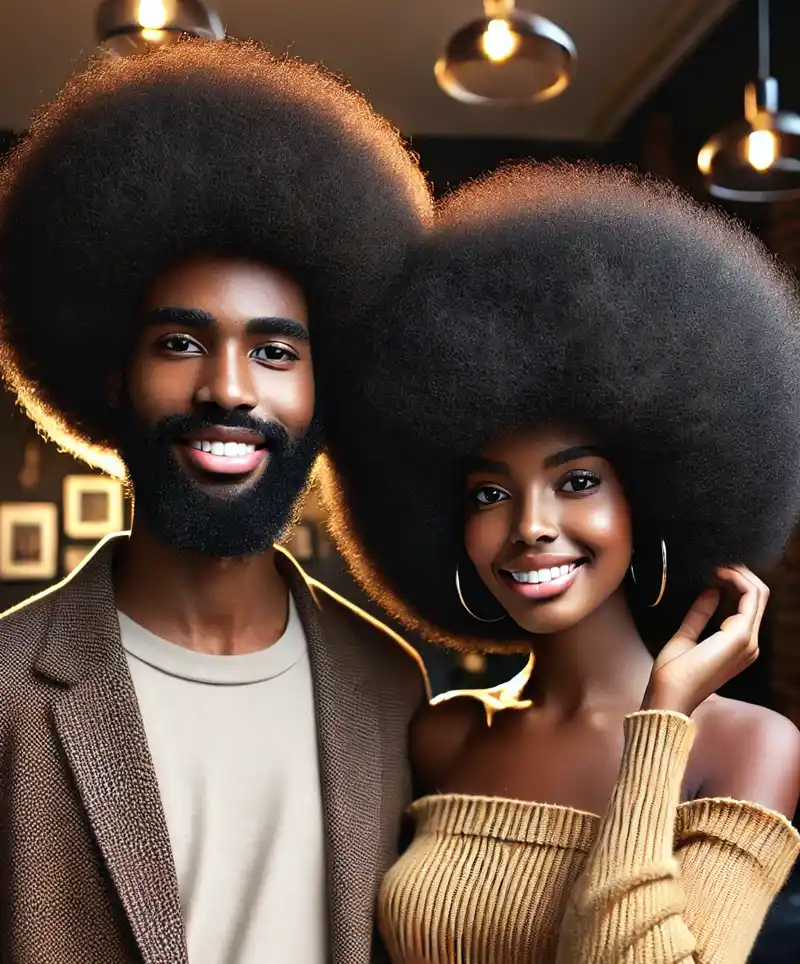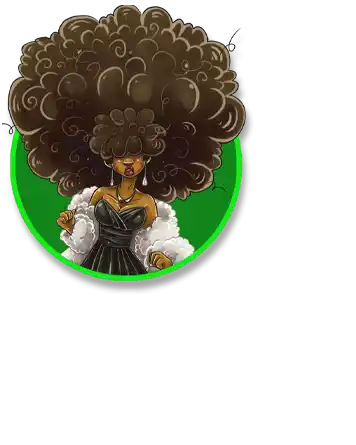Celebrating the Power, Pride, and Personality of the 'Fro
World Afro Day, celebrated on September 15th, is not only a day to honor a hairstyle but a day to embrace cultural identity, defy beauty standards, and revel in the glory of natural hair. The Afro, with its bold volume and unapologetic presence, has long been a symbol of resistance, empowerment, and freedom. Whether you're rocking a classic rounded 'fro, a tapered cut, or an artistic twist, this iconic hairstyle has a story to tell—so let's dive into the history, significance, and humor of the Afro.
 A Hair-Raising History
A Hair-Raising History
The Afro hairstyle has roots that stretch deep into the African continent, long before it became a fashion statement or a symbol of political rebellion. Historically, in many African societies, hair was a deeply significant cultural marker. Hairstyles could signify a person’s tribe, marital status, religion, and even social standing. The thick, coiled texture of natural African hair was celebrated and styled in a variety of intricate ways.
However, with the forced migration of Africans during the transatlantic slave trade, traditional hair practices were disrupted. Natural hair was often suppressed or deemed "unacceptable" by European beauty standards. For years, Black people were pressured to conform by straightening their hair or adopting hairstyles that hid their natural texture. It wasn’t until the 1960s and 1970s that the Afro made its triumphant return, this time as a symbol of Black pride during the Civil Rights and Black Power movements.
By wearing their hair in its natural state, activists like Angela Davis turned the Afro into a political statement. It became a bold, visual declaration of resistance to white supremacy and a celebration of Black beauty. The Afro was no longer just a hairstyle—it was a movement. And as history shows, few things can say "I’m here to make a statement" better than a halo of gravity-defying curls.
The Science Behind the 'Fro
The Afro isn’t just a hairstyle you wake up with (unless you're extraordinarily lucky). It requires care, attention, and a bit of understanding about the science of hair. African hair is characterized by its tight coils, which provide that iconic volume and shape. The hair's natural curl pattern helps it defy gravity, giving it a rounded shape that seems to float around the head like a soft cloud of defiance.
However, the same properties that make the Afro look spectacular also make it a challenge to maintain. Afro-textured hair tends to be drier than straight hair because the natural oils from the scalp struggle to travel down the hair shaft. That’s why moisturizing, detangling, and protective styling are key parts of Afro care.
Achieving the perfect Afro also requires some tactical maneuvering. A wide-tooth comb is your best friend, and for some, a pick is an essential tool for adding extra volume. It's like fluffing up a pillow—but way cooler. And just like that pillow, it’s all about finding the perfect balance between too much fluff and not enough.
Variations of the Afro
While the classic rounded Afro is a showstopper, there are countless variations that people use to put their personal spin on the style. Here are just a few of the bold, creative ways people wear their 'fro:
- The Classic Afro: A rounded, symmetrical shape that gives off serious 70s vibes. It’s the "go big or go home" of hairdos.
- The Tapered Afro: A more modern take, where the sides are kept short, and the top is full and voluminous. It’s like the mullet’s much cooler cousin.
- Afro Puffs: Why have one Afro when you can have two? Afro puffs are like mini clouds perched on either side of the head, offering a playful and youthful take on the style.
- Twist-Out Fro: A twist-out adds texture and definition to your curls, creating a more structured Afro that looks sculpted, yet soft.
- The Afro Mohawk: For the bold and daring, this style combines the rebellious spirit of the mohawk with the natural volume of the Afro. It’s not for the faint of heart—or those afraid of extra attention.
 It's Not Just Hair, It’s an Event
It's Not Just Hair, It’s an Event
One of the things people may not realize about the Afro is that maintaining it is practically a full-time job. Forget a simple "wash and go" situation—this is an all-day affair that involves a full arsenal of products, tools, and techniques. Here’s a typical day in the life of someone with an Afro:
- Moisturize, Moisturize, Moisturize: It’s the golden rule of Afro maintenance. Without proper hydration, the hair can become dry, brittle, and prone to breakage. So, if you see someone with an Afro carrying a spray bottle of water or leave-in conditioner, don’t question it—they’re just keeping their hair alive.
- The Pick is Key: Getting that perfect, voluminous shape isn’t just about having the right hair texture. It takes a little help from a pick or wide-tooth comb to fluff up the curls and create that signature rounded look. It’s like giving your hair a morning pep talk.
- Shrinkage Happens: If you’ve ever wondered why someone’s Afro seems smaller one day and larger the next, welcome to the phenomenon known as shrinkage. Curly hair can shrink up to 75% of its actual length when dry, so the Afro you see may be a lot longer than you think. It’s all part of the magical mystery of Afro-textured hair.
A Celebration of Culture and Confidence
World Afro Day is about more than just celebrating a hairstyle—it’s about embracing natural beauty, challenging outdated beauty standards, and recognizing the cultural significance of Afro-textured hair. Founded by Michelle De Leon in 2017, the day encourages people with Afro hair to take pride in their natural texture, while educating others about the historical and cultural importance of the Afro.
Schools, organizations, and communities around the world participate in events that promote hair positivity and cultural appreciation. Whether through hair workshops, panel discussions, or simply showing off their best 'fro, people come together to celebrate the beauty and resilience of Afro hair.
The Ultimate Conversation Starter
Let’s face it: having an Afro is like wearing a statement piece of jewelry. People will notice, people will stare, and—most times—people will comment. Sometimes the comments are empowering: "Wow, your hair is incredible!" Other times, they veer into the land of awkward compliments like, "Can I touch it?" (Pro tip: No, you cannot.)
But having an Afro can also spark deeper conversations about race, identity, and beauty standards. For many, wearing their hair in its natural state is a powerful way of asserting their identity and rejecting societal pressures to conform. It’s like saying, "This is who I am, and I’m not changing for anyone." In that sense, the Afro isn’t just a hairstyle—it’s a statement.
Fun Afro Facts
- Did you know the largest Afro in the world belongs to Aevin Dugas, whose impressive 'fro measures over 4 feet in circumference? Talk about a hair halo!
- The Afro was so popular in the 70s that it inspired fashion trends, with everything from clothes to sunglasses designed to complement the big hair era.
- Angela Davis, a revolutionary figure of the Civil Rights Movement, famously sported an Afro that became synonymous with her activism. Her hair was more than just a style; it was a political statement.
World Afro Day is about more than just a hairstyle—it’s about embracing natural beauty, honoring cultural heritage, and standing tall (sometimes literally) in a world that often tries to define beauty on narrow terms. The Afro, with all its glorious volume and curls, represents freedom, resilience, and the power of self-expression. So, whether you’re wearing your 'fro loud and proud or just admiring from afar, take a moment to appreciate the significance behind the style. Because, let’s be honest, not every hairstyle can defy gravity while also making a statement!
Please Share our Content






 A Hair-Raising History
A Hair-Raising History It's Not Just Hair, It’s an Event
It's Not Just Hair, It’s an Event








 "Sláinte!" is a traditional Irish expression used as a toast, equivalent to "Cheers!" in English.
"Sláinte!" is a traditional Irish expression used as a toast, equivalent to "Cheers!" in English.